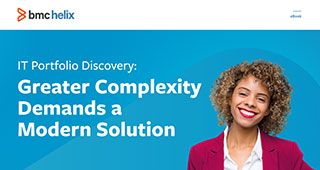IT asset management (ITAM) is the process of ensuring the efficient use and management of an organization’s assets throughout their lifecycle. This includes procurement, deployment, maintenance, upgrades, tracking, and disposition.
Today, ITAM extends beyond tagging, distributing, and tracking devices. The adoption of cloud-based infrastructures, subscription-based software, and end-user customization require enterprises to understand how devices are being used in continually changing environments. In addition, effective ITAM acts as the foundation for optimizing the use of IT resource optimization, lifecycle management, and planning for future investments.
Where do you begin to look?
Too often, assets are tracked across multiple locations, by different departments. This silo-based approach makes it difficult for teams to share resources, which negatively impacts spending and makes it impossible for organizations to gain a complete understanding of the infrastructure and how it supports the business.
“A lack of visibility is like driving while wearing a blindfold. Not only does it leave IT asset management professionals unsure of what they have to protect from risk, leaving endpoints potentially vulnerable, but it also means data management and disposition is much harder to achieve compliantly.”*
BMC Helix Discovery’s software-as-a-service (SaaS)-based, agentless discovery and dependency modeling solution helps IT teams discover assets and their relationships across the entire IT infrastructure. Within minutes, asset managers can obtain an up-to-date list of devices and their dependencies across cloud-native or on-premises environments.
With an accurate inventory, IT teams can manage each asset’s lifecycle, which helps organizations optimize resources, manage costs, maintain compliance, and mitigate risk. This single source of truth makes it easy to understand how assets support the business and deliver exceptional customer experiences.
How does it work?
BMC Helix Discovery uses a lightweight outpost that runs within the customer’s data center or public cloud. Using IP ranges and credentials, it performs an initial scan to securely identify all assets across the infrastructure. In addition to identifying assets, BMC Helix Discovery also discovers attributes that identify the business service that each asset supports.
Through scheduled and on-demand discovery runs, event-driven discovery, and the implementation of Dynamic Service Models, BMC Helix Discovery ensures that the inventory of assets will always be up to date. As configuration items change or dependencies on business services shift, asset managers are equipped to make decisions based on an accurate, dynamically updated service view.
BMC Helix Discovery automatically captures end-of-life (EOL), end-of-support (EOS), and end-of-extended-support (EOES) information for operating systems, software products, network devices, storage devices, and hosts. This provides asset managers with critical information which enables them to plan for future investments, ensuring predictable, cost-effective asset management.
BMC Helix Discovery’s out-of-the-box reporting capabilities enable asset managers to quickly review their assets across the enterprise. In addition to viewing the data directly in BMC Helix Discovery, IT team members can query the data via BMC Helix Discovery’s REST API for external reporting or synchronizing to a CMDB, which makes asset data available to other asset management processes.
Positively impact your business
By identifying and managing a complete list of assets across the enterprise, IT organizations can:
- Minimize risk
- Maintain compliance
- Reduce costs
- Achieve higher levels of performance and availability
- Optimize use of existing assets
- Decommission unused infrastructure
- Increase productivity
- Optimize procurement processes
- Enhance vendor relationships
BMC Helix Discovery’s SaaS-based, agentless asset discovery and dependency modeling solution helps IT organizations easily track and manage assets across the entire infrastructure. This puts organizations in an ideal position to proactively procure, deploy, maintain, upgrade, track, and dispose of assets in a manner that benefits employees, customers, and the business.
Visit the BMC Helix Discovery webpage to learn more.
*“IT asset management risks in 2021 and beyond…,” TES, Accessed August 30, 2021, https://www.tes-amm.com/news/it-asset-risk-management-in-and-beyond.







